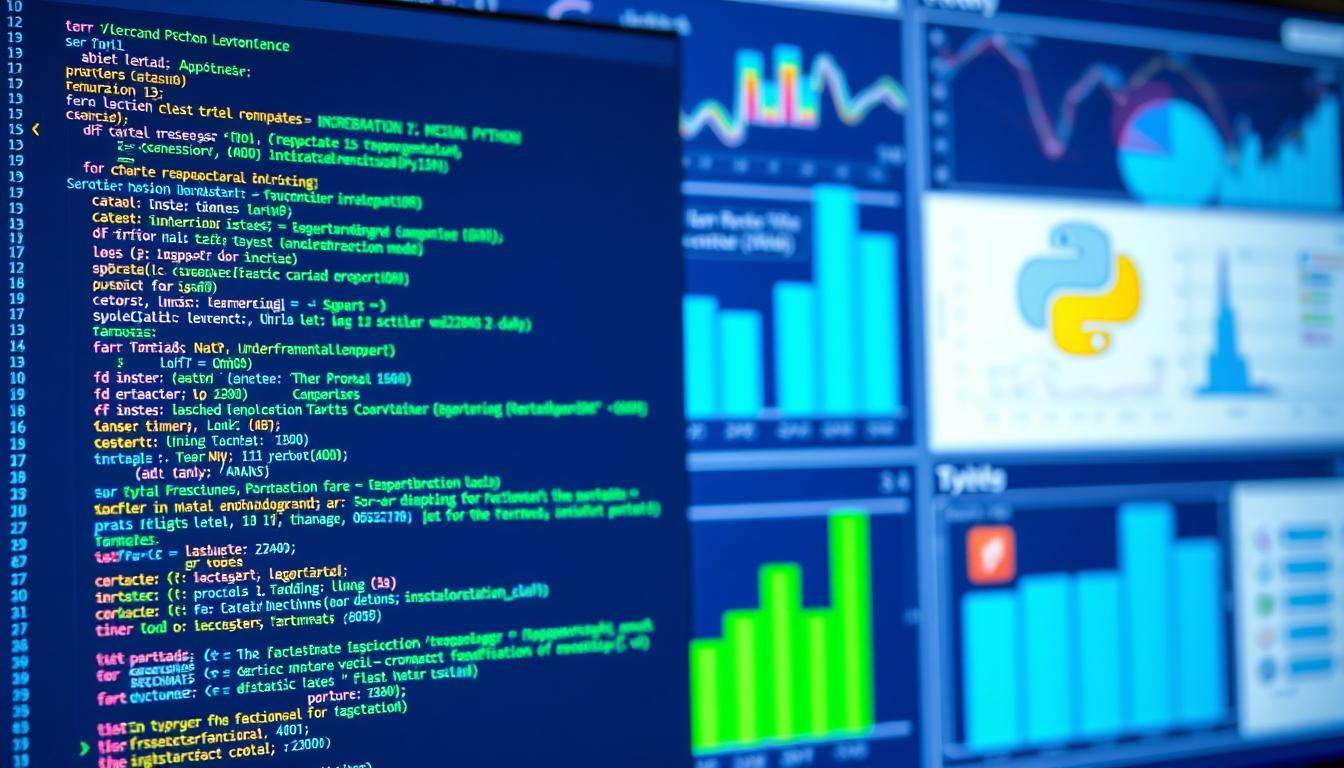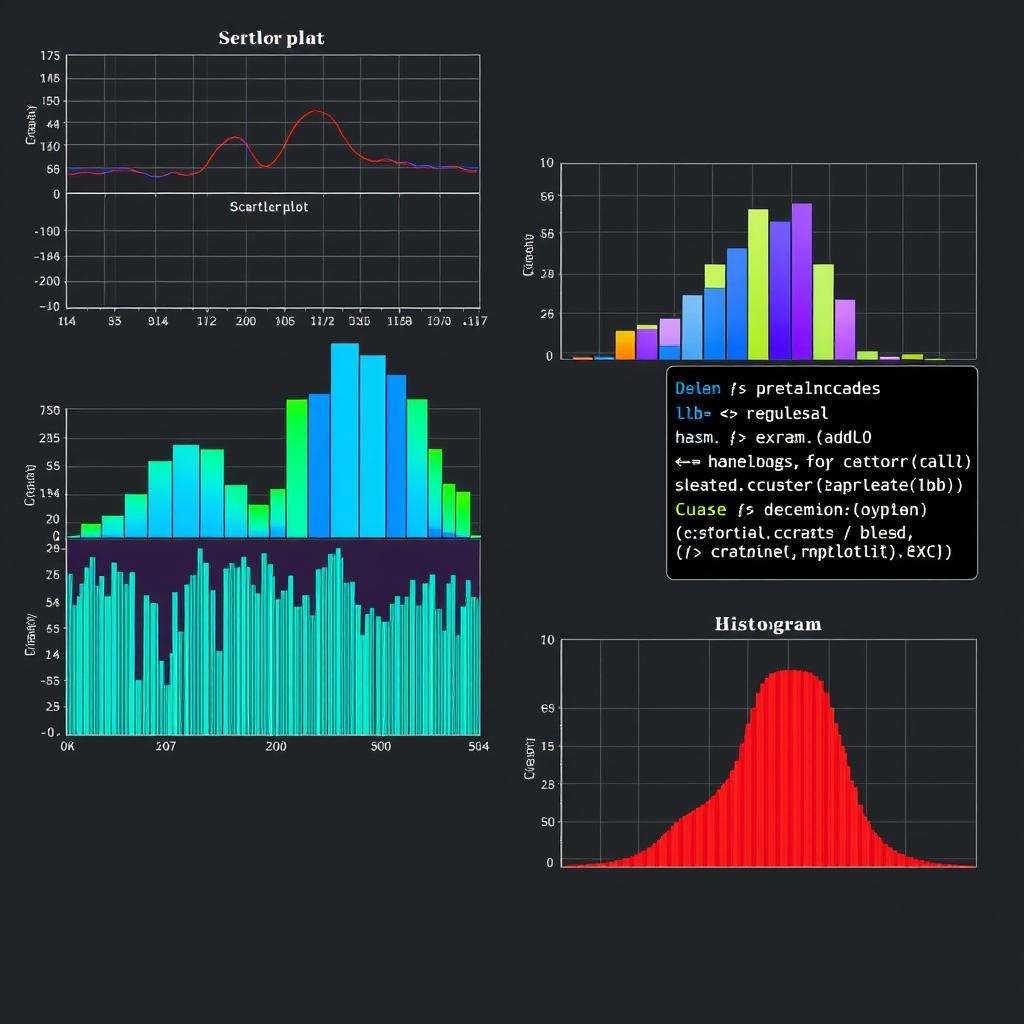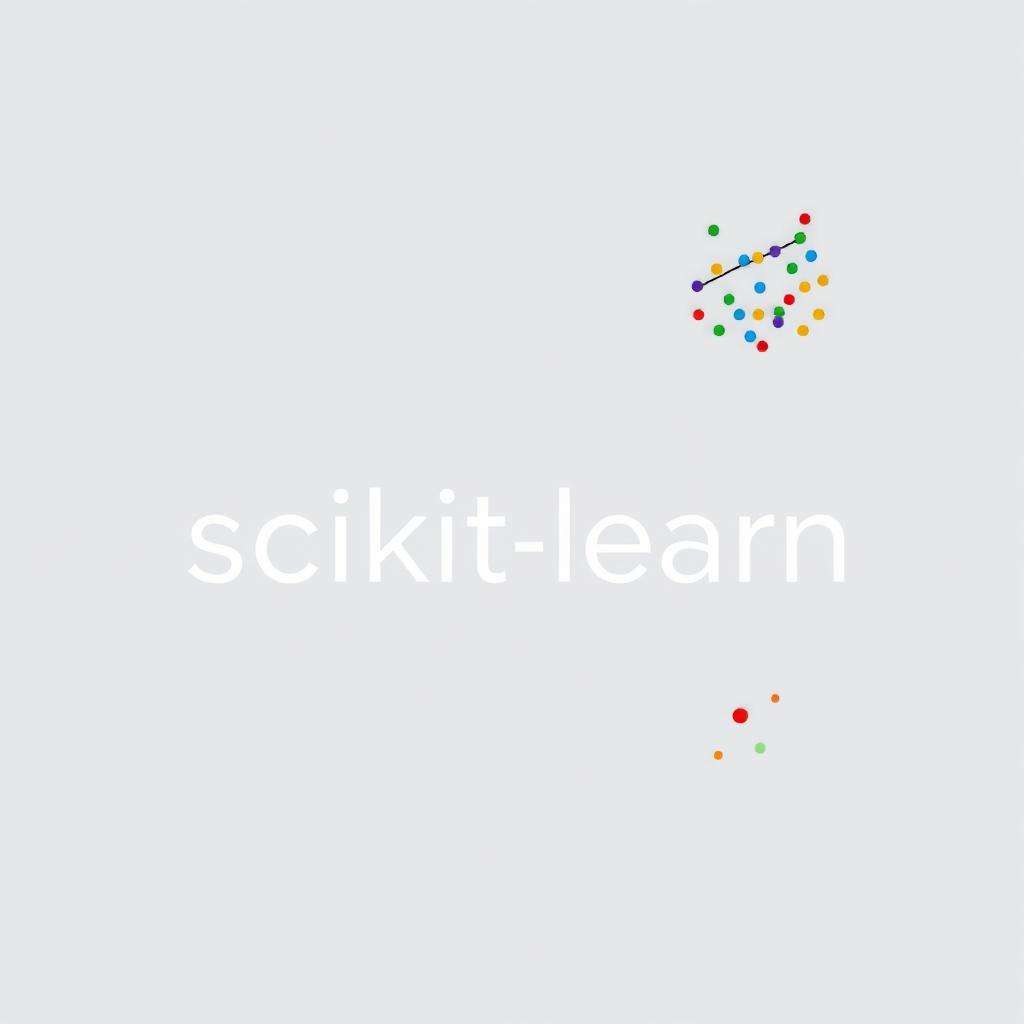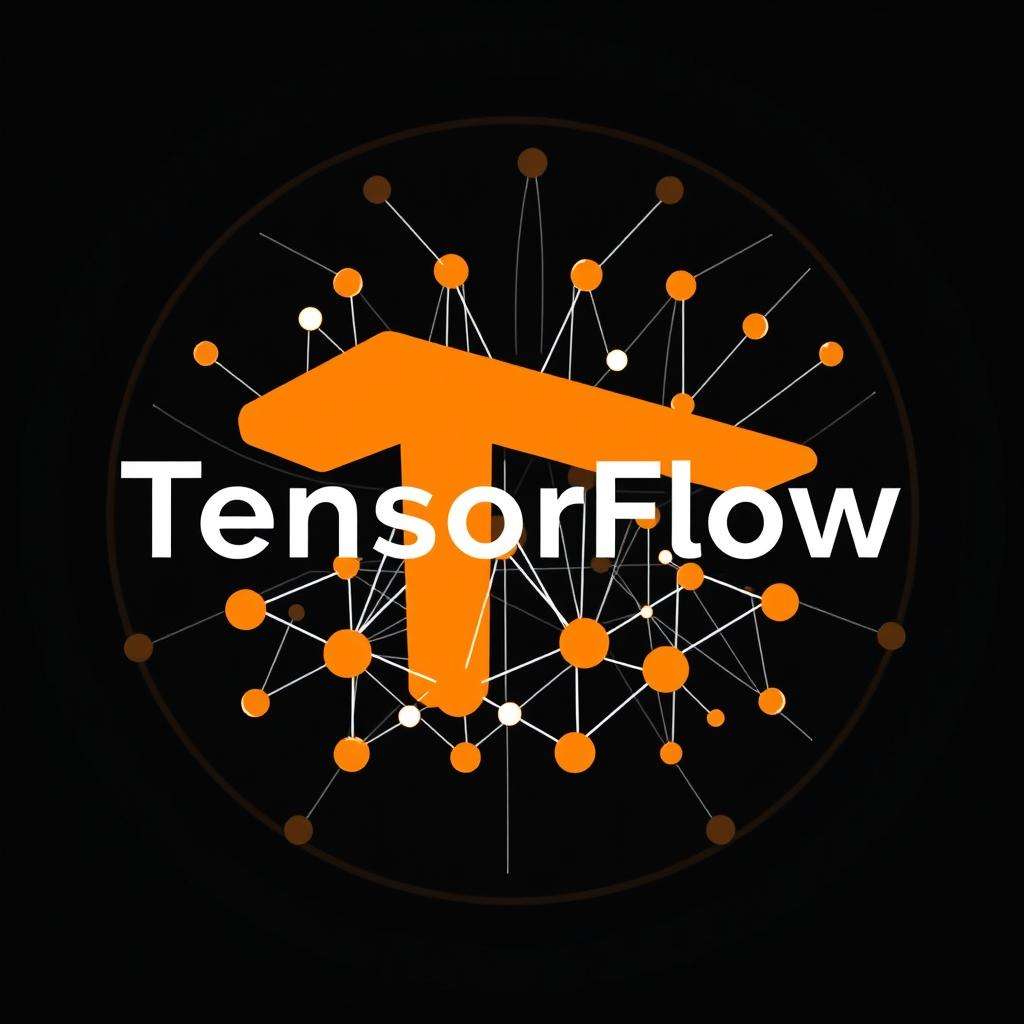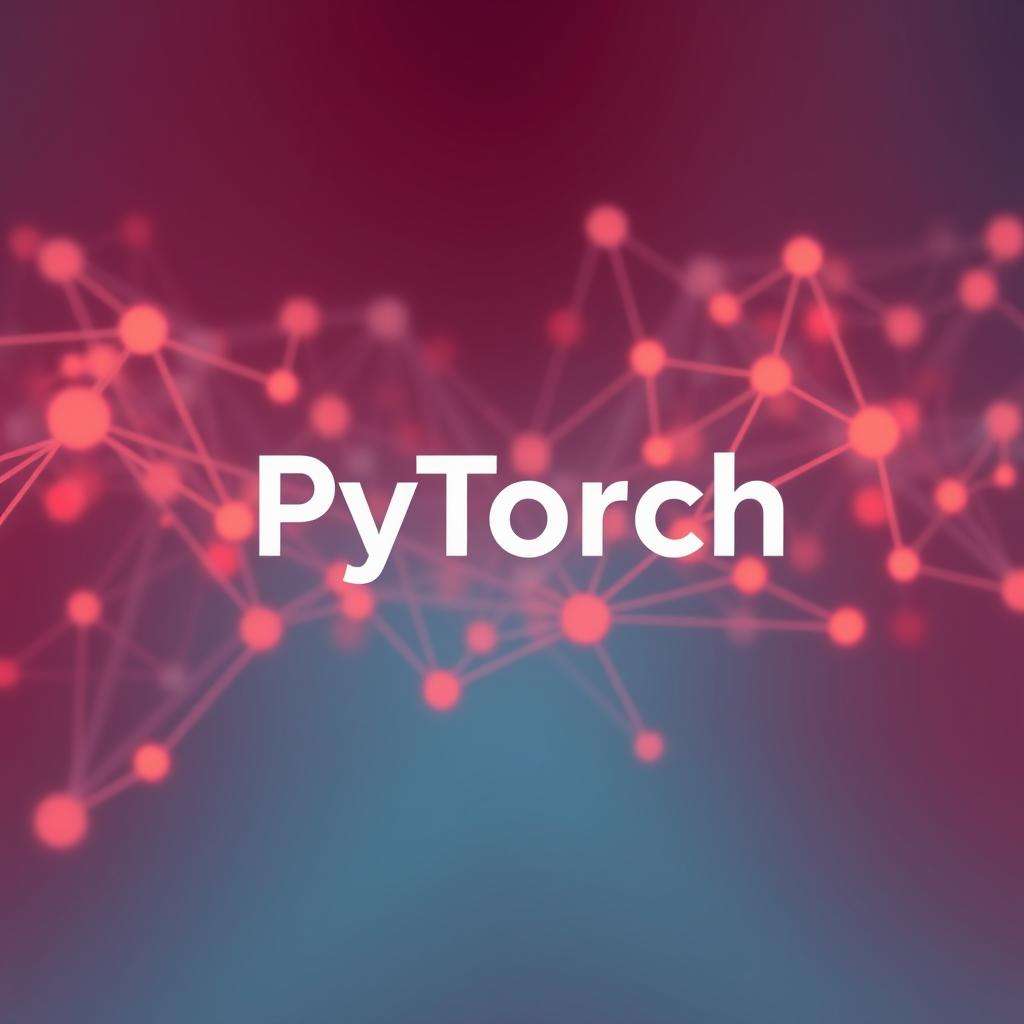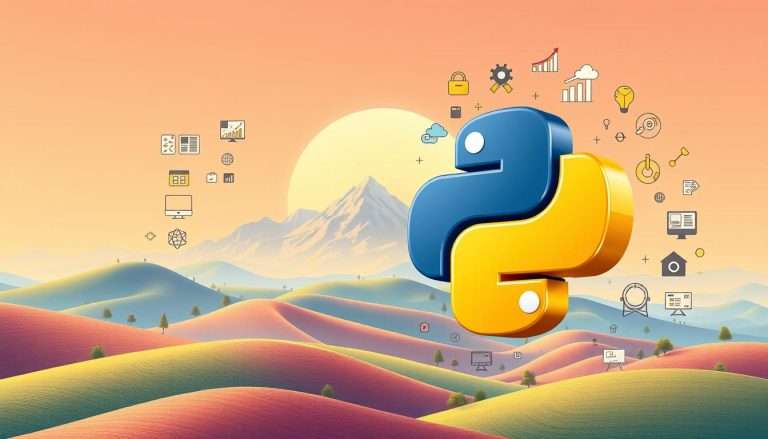Why Python Dominates Modern Data-Driven Fields in 2025?
Python’s Pivotal Role in Modern Data-Driven Fields
In the artificial intelligence realm, Python serves as the foundation for developing sophisticated algorithms that can learn from data and make intelligent decisions. Machine learning practitioners leverage Python to build predictive models that identify patterns and make accurate forecasts based on historical data.
What makes Python particularly valuable is its ability to seamlessly integrate across these domains. A data analyst can use the same Python environment to perform initial data exploration, a data scientist can develop advanced statistical models, and a machine learning engineer can deploy those models into production—all within the same ecosystem.
“Python has become the universal language of data science and machine learning because it strikes the perfect balance between accessibility for beginners and power for experts.”
Essential Python Libraries for Data Science and AI
Python’s strength in data-related fields stems largely from its rich ecosystem of specialized libraries. These powerful tools handle everything from data manipulation to complex neural networks, allowing professionals to focus on solving problems rather than writing code from scratch.
The cornerstone library for data manipulation and analysis in Python. Pandas provides data structures like DataFrames that make working with structured data intuitive and efficient.
Use case: Cleaning messy datasets, performing group operations, and preparing data for visualization or machine learning.
The fundamental package for scientific computing in Python. NumPy provides support for large, multi-dimensional arrays and matrices, along with mathematical functions to operate on these elements.
Use case: Performing complex mathematical operations on large datasets with high computational efficiency.
The standard plotting library in Python that provides a MATLAB-like interface. Matplotlib allows you to create static, animated, and interactive visualizations.
Use case: Creating publication-quality charts, graphs, and visualizations to communicate data insights effectively.
A machine learning library built on NumPy, SciPy, and Matplotlib. Scikit-learn provides simple and efficient tools for data mining and data analysis through a consistent interface.
Use case: Building classification, regression, clustering models, and performing feature selection and model evaluation.
An end-to-end open-source platform for machine learning. TensorFlow provides a comprehensive ecosystem of tools, libraries, and community resources for building and deploying ML models.
Use case: Developing and training deep learning models for image recognition, natural language processing, and other AI applications.
An open-source machine learning library based on the Torch library. PyTorch provides a flexible framework for building and training neural networks with automatic differentiation.
Use case: Research-oriented deep learning projects, computer vision, and natural language processing tasks requiring dynamic computation graphs.
Master Python for Data Science
Ready to dive deeper into these powerful Python libraries? Our comprehensive Python Zero To mastery course covers all these libraries with hands-on projects and real-world applications.
Python in Action: Practical Code Example
One of Python’s greatest strengths is its readability and simplicity. Even complex data operations can be expressed in just a few lines of code. Let’s look at a practical example that demonstrates how Python can be used to clean data and build a simple machine learning model:
Key Python Features Demonstrated:
- Concise data loading and manipulation with Pandas
- Simple model creation and training with Scikit-learn
- Intuitive data visualization with Matplotlib
- Readable syntax that resembles natural language
- Seamless integration between different libraries
Python’s Advantages for Data Professionals
Why Python Excels in Data Fields
- Readability: Clean syntax that resembles natural language makes code easy to write and maintain
- Versatility: One language for the entire data workflow from collection to deployment
- Rich Ecosystem: Thousands of specialized libraries for every data-related task
- Community Support: Vast community providing resources, tutorials, and solutions
- Integration Capabilities: Easily connects with other tools and languages
- Jupyter Notebooks: Interactive computing environment ideal for data exploration
- Industry Adoption: Widely used across tech giants, startups, and research institutions
- Low Entry Barrier: Beginner-friendly with gradual learning curve
Challenges to Consider
- Performance: Can be slower than compiled languages for certain operations
- Mobile Development: Not ideal for mobile applications
- Memory Usage: Can be memory-intensive with large datasets
- Global Interpreter Lock: Limits true multi-threading capabilities
- Version Compatibility: Differences between Python 2 and 3 can cause issues
Despite these challenges, Python’s advantages far outweigh its limitations for data-related work. Many performance bottlenecks can be addressed through optimized libraries like NumPy and Pandas, which use C-based implementations for computationally intensive operations. For truly performance-critical applications, Python can easily integrate with C/C++ code.
“Python’s readability and simplicity make it an excellent choice for beginners, while its powerful libraries make it indispensable for experts. This rare combination has cemented its position as the leading language for data science and AI.”
Jupyter Notebooks: The Perfect Environment for Data Science
Jupyter Notebooks have revolutionized how data professionals work with Python. These interactive computing environments allow you to combine executable code, rich text, visualizations, and narrative explanations in a single document. This makes them ideal for data exploration, analysis, and sharing insights with both technical and non-technical stakeholders.
Key Benefits of Jupyter Notebooks:
For Learning and Development
- Interactive execution of code cells
- Immediate visualization of results
- Ability to document thought process alongside code
- Support for rich media including images and videos
- Perfect for experimentation and iterative development
For Professional Work
- Shareable documents that combine code and results
- Reproducible research and analysis
- Easy collaboration with version control
- Support for multiple programming languages
- Convertible to various formats (HTML, PDF, slides)
Jupyter Notebooks have become so central to data science workflows that many cloud platforms now offer hosted notebook environments, allowing you to work with Python and data without installing anything locally.
Career Opportunities with Python Skills
Proficiency in Python for data-related tasks opens doors to some of the most in-demand and well-compensated roles in today’s job market. Companies across all industries—from tech giants to healthcare providers, financial institutions to retail chains—are seeking professionals who can extract value from their data using Python.
Top Career Paths for Python Data Professionals:
| Role | Primary Python Skills | Average Salary (US) | Growth Outlook |
| Data Analyst | Pandas, NumPy, Matplotlib, SQL | $70,000 – $90,000 | High |
| Data Scientist | Scikit-learn, StatsModels, Pandas, Visualization | $100,000 – $130,000 | Very High |
| Machine Learning Engineer | TensorFlow, PyTorch, Scikit-learn, Cloud APIs | $110,000 – $150,000 | Very High |
| AI Research Scientist | PyTorch, TensorFlow, Research Libraries | $120,000 – $160,000 | High |
| Business Intelligence Analyst | Pandas, Visualization, SQL, Reporting | $80,000 – $110,000 | Moderate |
Beyond these specific roles, Python skills are increasingly valued across many positions that weren’t traditionally technical. Marketing analysts, financial analysts, healthcare researchers, and operations managers are all finding that Python proficiency gives them a significant advantage in their fields.
Boost Your Career with Python Skills
Ready to transform your career prospects with in-demand Python skills? Our Python Zero To Mastery Course will give you the expertise employers are looking for.
Getting Started with Python for Data Fields
Starting your Python journey for data analytics, data science, AI, and machine learning doesn’t have to be overwhelming. With the right approach and resources, you can build your skills progressively, from basic programming concepts to advanced machine learning techniques.
Actionable Steps to Learn Python for Data Fields:
- Master Python FundamentalsStart with basic Python syntax, data types, control structures, and functions. A solid foundation in programming concepts will make learning specialized libraries much easier.Recommended: Python From Zero To Mastery
- Learn Data Manipulation with PandasFocus on loading, cleaning, and transforming data using Pandas. This is the cornerstone skill for any data-related work in Python.Recommended: Official Pandas Documentation and Tutorials
- Master Data VisualizationLearn to create insightful visualizations using Matplotlib and Seaborn to communicate your findings effectively.Recommended: Matplotlib Tutorials
- Build Statistical Analysis SkillsDevelop an understanding of statistical concepts and how to implement them in Python using libraries like SciPy and StatsModels.Recommended: MIT’s Statistics and Data Science MicroMasters
- Explore Machine LearningLearn the fundamentals of machine learning algorithms and how to implement them using Scikit-learn.Recommended: IBM’s Machine Learning with Python course
- Dive into Deep Learning (Optional)If you’re interested in AI and neural networks, explore deep learning frameworks like TensorFlow and PyTorch.Recommended: Deep Learning Specialization by deeplearning.ai
- Work on Real ProjectsApply your skills to real-world datasets and problems. Nothing solidifies learning like practical application.Recommended: Kaggle Competitions and Datasets
Pro Tip: The Power of Community
Join Python and data science communities like Stack Overflow, Reddit’s r/datascience, and GitHub to learn from others, get help when stuck, and stay updated on best practices. Collaborative learning can significantly accelerate your progress.
Conclusion: Your Python Journey Awaits
Python’s dominance in data analytics, data science, AI, and machine learning is no accident. Its combination of simplicity, power, and a rich ecosystem of specialized libraries makes it uniquely suited for data-intensive tasks. Whether you’re analyzing business metrics, building predictive models, or developing cutting-edge AI systems, Python provides the tools you need to succeed.
The journey to mastering Python for data fields is both rewarding and practical. Each skill you develop opens new possibilities and makes you more valuable in an increasingly data-driven job market. The best part? You can start applying what you learn immediately, seeing real results that reinforce your progress.
Remember that everyone starts somewhere. Even the most accomplished data scientists and AI researchers began with basic Python syntax. What matters most is consistent learning and practical application. With the resources and steps outlined in this article, you’re well-equipped to begin your Python journey and unlock the exciting opportunities that await in the world of data.
Start Your Python Journey Today
Ready to harness the power of Python for data analytics, data science, AI, and machine learning? This comprehensive beginner-friendly course will take you from zero to Python proficiency with hands-on projects and expert guidance.

